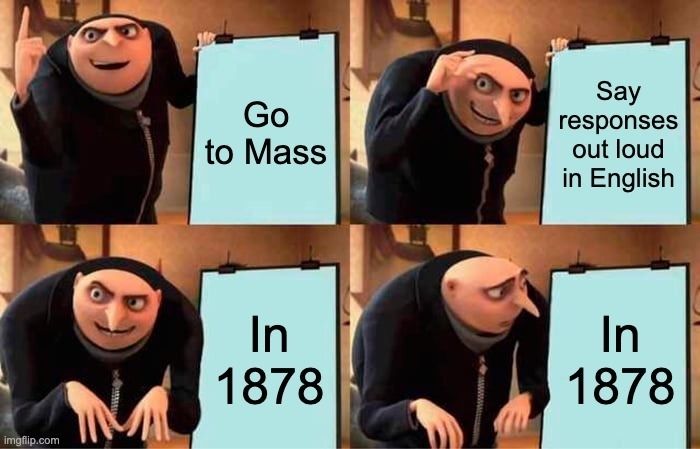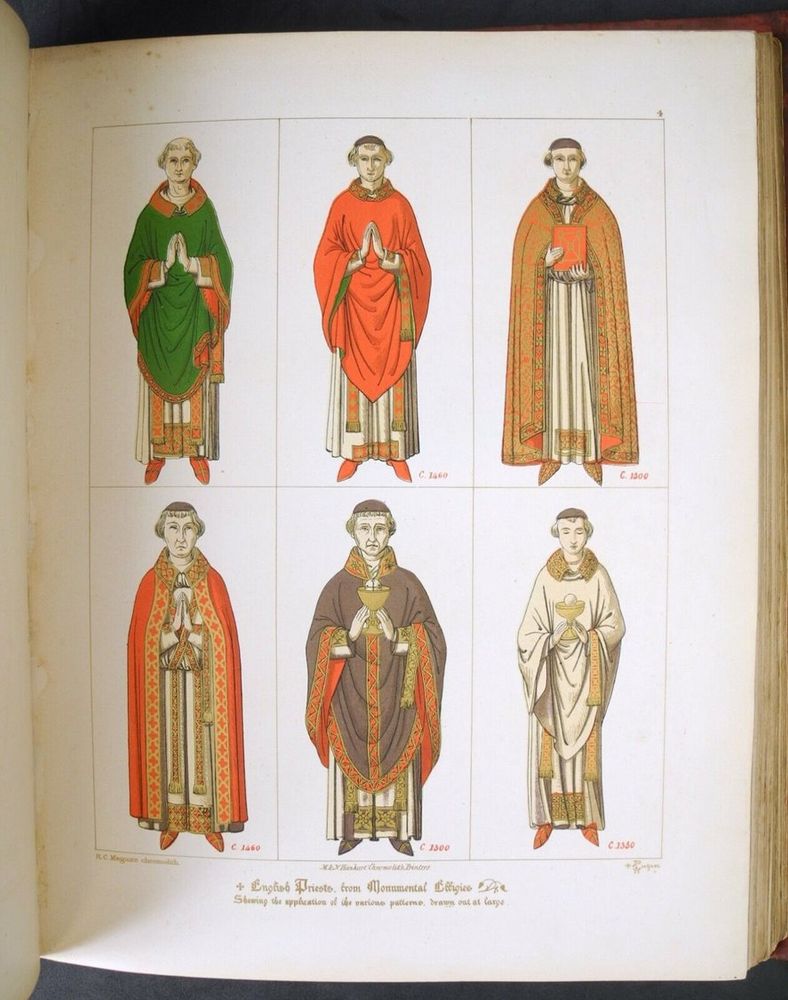
🌐 HandMissalHistory.com
🐦 Twitter.com/HandMissals
😂

😂
That's all for today!
In the meantime, check it out and let me know what you think
🔗 handmissalhistory.com/dialog/

That's all for today!
In the meantime, check it out and let me know what you think
🔗 handmissalhistory.com/dialog/
Next I explore what contemporary figures thought about them.
Lastly, I reflect on what lessons these methods (their successes & failures) can teach us today.

Next I explore what contemporary figures thought about them.
Lastly, I reflect on what lessons these methods (their successes & failures) can teach us today.
1⃣ the Children’s Mass
2⃣ the Children’s ‘Dialog’ Mass
3⃣ the English Dialog Mass

1⃣ the Children’s Mass
2⃣ the Children’s ‘Dialog’ Mass
3⃣ the English Dialog Mass
They were recommended by respected theologians and catechists, and were openly discussed and approved of by clerical, education, and choral journals

They were recommended by respected theologians and catechists, and were openly discussed and approved of by clerical, education, and choral journals
The congregation would read aloud - in unison and in English - the liturgical texts while the Mass was underway.
They would often even recite some of the priest's parts!
(👇this was first published in 1927!)

The congregation would read aloud - in unison and in English - the liturgical texts while the Mass was underway.
They would often even recite some of the priest's parts!
(👇this was first published in 1927!)
It was also pretty popular!
I have found at least 69 book titles containing these vernacular Mass methods, published in a combined total of at least 329 editions between 1861 and 1961!

It was also pretty popular!
I have found at least 69 book titles containing these vernacular Mass methods, published in a combined total of at least 329 editions between 1861 and 1961!
This gives us new unparalleled insight into what was **actually happening** in the pews during these years

![The Australian Catholic Hymn Book, 5th ed. (Sydney: Louise Gille & Co., sd [1890s?]). Photo courtesy of the State Library of New South Wales, public domain.](https://cdn.bsky.app/img/feed_thumbnail/plain/did:plc:pr7vypta57r5urxc6wpjndz2/bafkreiheom72sqpm3vz5zsh7pxocfu2n7ybfuktg3fyubhlzyfnwubmf4i@jpeg)
This gives us new unparalleled insight into what was **actually happening** in the pews during these years
It features 31 photos of extraordinary hand missals and prayer books, many of which are now very scarce
(this one is from 1870 btw 👀)

It features 31 photos of extraordinary hand missals and prayer books, many of which are now very scarce
(this one is from 1870 btw 👀)
It's a study of vernacular congregational participation at Mass between 1861 and 1961.
Everything you think you know about liturgy before the Second Vatican Council is probably wrong 🧵⤵️

It's a study of vernacular congregational participation at Mass between 1861 and 1961.
Everything you think you know about liturgy before the Second Vatican Council is probably wrong 🧵⤵️
Can't believe it's just two weeks away.
I'm excited to present my paper alongside Dr. Carmina Chapp on Friday afternoon.
I hope to see you there!
tinyurl.com/SCL-2023


Can't believe it's just two weeks away.
I'm excited to present my paper alongside Dr. Carmina Chapp on Friday afternoon.
I hope to see you there!
tinyurl.com/SCL-2023
In America, some diocesan newspapers commented wryly on how absurd the thing sounded

In America, some diocesan newspapers commented wryly on how absurd the thing sounded
He talks about a rumor he heard regarding the exact specifications that Rome had approved: a width of 3ft 6in.

He talks about a rumor he heard regarding the exact specifications that Rome had approved: a width of 3ft 6in.
Baines was deeply concerned about this and wrote letters to try and get it sorted out.


Baines was deeply concerned about this and wrote letters to try and get it sorted out.
A few of the more conservative and ultramontane bishops had reservations about it, worried that it was Against The Rules in Rome

A few of the more conservative and ultramontane bishops had reservations about it, worried that it was Against The Rules in Rome
Many people are saying
&c

Many people are saying
&c
Its presence in the ritual was also used as justification to adopt the term as the normative practice
Here is an example from Cincinnati, from Karl Alter (chairman of the US Bishops)

Its presence in the ritual was also used as justification to adopt the term as the normative practice
Here is an example from Cincinnati, from Karl Alter (chairman of the US Bishops)
It was remarkable because it permitted most of the sacraments to be performed almost entirely in English
It also used "Holy Spirit"

It was remarkable because it permitted most of the sacraments to be performed almost entirely in English
It also used "Holy Spirit"
From the 1943 Dominican Sunday Missal (tag your favorite OP accounts here)
In a frankly bizarre editorial choice, they included *both* "Holy Ghost" and "Holy Spirit" usages


From the 1943 Dominican Sunday Missal (tag your favorite OP accounts here)
In a frankly bizarre editorial choice, they included *both* "Holy Ghost" and "Holy Spirit" usages
This translation was begun & overseen by Bishop Edwin V. O'Hara, a remarkable ecclesiastical figure, and was quickly added to hand missals, etc.


This translation was begun & overseen by Bishop Edwin V. O'Hara, a remarkable ecclesiastical figure, and was quickly added to hand missals, etc.
Fol. 169v, St. John the Baptist Preaching. Circa ~1500.
Via the Cleveland Museum of Art

Fol. 169v, St. John the Baptist Preaching. Circa ~1500.
Via the Cleveland Museum of Art





